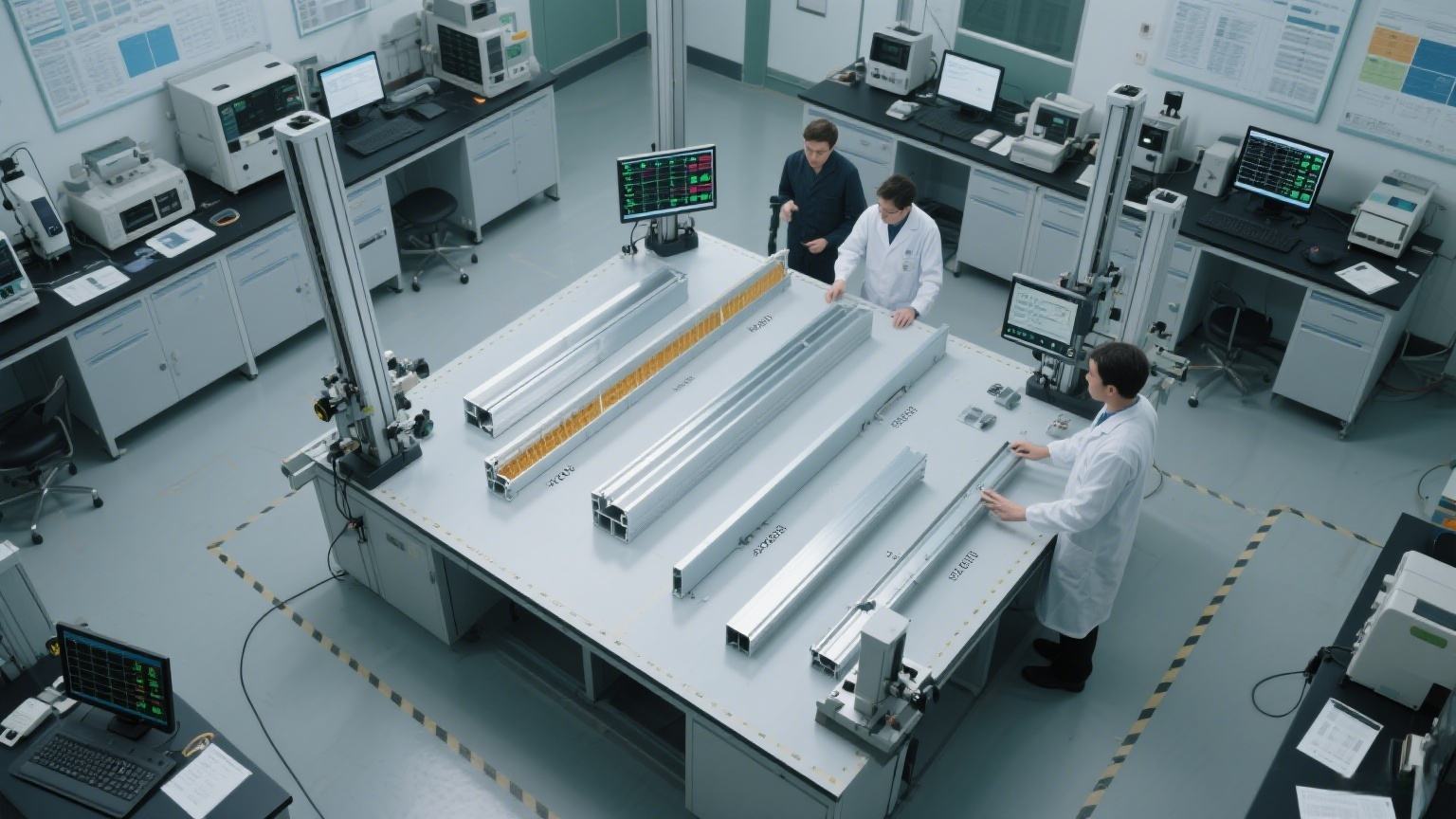
Unlock Top Prices: How Much is Aluminum Per Pound? 2025 Guide to Scrap, Alloys & Local Rates How Much Is Aluminum Per Pound? Ever wondered, "How much is aluminum per pound?" If you’ve tried to sell scrap cans or buy aluminum for a project, you’ve probably noticed that the answer changes—sometimes even from one week to the next. That’s because aluminum pricing is anything but static. It’s shaped by a wide range of global and local forces, making it essential to stay informed if you want to get the best deal or maximize your returns. Let’s break it down: when people talk about the "aluminum price per pound," they might be referring to two very different things. First, there’s the commodity price—the rate manufacturers pay for new, pure aluminum traded on major exchanges like the London Metal Exchange (LME) or COMEX. This price is often quoted in U.S. dollars per metric ton, then converted to pounds for everyday use. For example, in June 2025, aluminum futures hovered around $2,579 per metric ton, which translates to roughly $1.17 per pound at the wholesale level (Trading Economics). But if you’re selling aluminum scrap—whether it’s cans from your kitchen, old siding, or auto parts—you’ll see a different number. Scrap prices are what local recycling centers or scrapyards pay for used aluminum. These rates are typically lower than the commodity price, reflecting the costs of collection, sorting, cleaning, and reprocessing. Scrap prices also fluctuate daily and can vary widely depending on your location, the condition of the material, and the specific type of aluminum you have. Commodity/New Aluminum Price: What manufacturers pay for pure, newly produced aluminum. Higher, but only accessible to large-scale buyers. Scrap Aluminum Price: What individuals and businesses receive when selling used aluminum. Lower, but accessible to everyone. Sounds complex? It can be, but understanding these basics is the first step to making sense of the market. Throughout this guide, you’ll learn not just the current rates, but also why prices move, how to identify valuable types of aluminum, and practical strategies for getting top dollar—whether you’re recycling cans, selling specialty alloys, or comparing rates across different regions. Ready to unlock the full value of your aluminum? Let’s dive in and explore everything you need to know about the aluminum price per pound in 2025. Key Factors That Determine Aluminum Prices Ever noticed how the price you get for aluminum scrap can change from one month—or even one city—to the next? If you’re wondering why, the answer lies in a web of economic, industrial, and logistical forces that shape the aluminum market every day. Let’s break down the most important aluminum price factors so you can better predict—and even influence—the payout you receive. The Global Benchmark: London Metal Exchange (LME) Sets the Tone Imagine the LME as the "stock market" for metals. Here, aluminum is traded in massive quantities, and the pric...
Read More
Can Aluminum Foil Go In The Oven? A Complete Safety Guide Can Aluminum Foil Go in the Oven? When you think about baking, roasting, or prepping meals, aluminum foil probably comes to mind as a go-to kitchen helper. From lining pans to wrapping leftovers, it’s a staple in almost every home. But here’s a common question many cooks ask: can aluminum foil go in the oven? And, more importantly, is it safe to put aluminum foil in the oven for all your favorite recipes? The short answer is yes—aluminum foil can safely be used in most ovens for a wide range of cooking tasks. Its ability to withstand high temperatures and reflect heat makes it a popular choice for lining baking sheets, covering casseroles, or wrapping foods to lock in moisture and flavor. In fact, both home cooks and culinary professionals rely on foil because it helps food cook evenly and makes cleanup a breeze. However, before you reach for that roll of foil, it’s important to know that there are some crucial safety guidelines you should follow. Used incorrectly, foil can cause uneven cooking, damage your oven, or even pose a safety risk. For example, lining the oven floor with foil or letting it touch heating elements is a big no-no, as it can disrupt heat flow and potentially harm your appliance (Whirlpool). In this complete safety guide, you’ll discover the science behind aluminum foil, its best uses, and the mistakes to avoid. Whether you’re a baking enthusiast or just want to simplify cleanup, understanding how to use foil properly will help you get the best results—safely and confidently. The Science Behind Aluminum Foil and Heat Ever wondered why aluminum foil is such a kitchen staple—or what makes it so reliable in the oven? Let’s break down the basics, from its composition to how it handles heat, so you can use it with confidence for all your baking and roasting needs. What Is Aluminum Foil Made Of? Aluminum foil is essentially a very thin sheet of rolled aluminum, sometimes alloyed for extra strength. The thickness of commercial foil ranges from as thin as 0.0065 mm (6.5 microns) up to 0.2 mm. Anything thicker than 0.2 mm is considered aluminum sheet, not foil (AZoM). This ultra-thin metal is lightweight, flexible, and easy to mold around food or baking pans, making it incredibly versatile in the kitchen. Key Properties That Make Foil Oven-Safe Excellent Heat Conductivity: Aluminum is a superb conductor of heat, with a thermal conductivity of about 235 W/m·K. This means it quickly and evenly transfers oven heat to your food, helping it cook uniformly. High Melting Point: The aluminum foil melting point is approximately 660°C (1220°F)—far above any temperature you’ll encounter in a home oven or broiler. This ensures it won’t melt or break down during typical baking or roasting. Barrier Protection: Foil acts as a total barrier to light, moisture, and gases, helping preserve food quality and prevent flavor loss. Non-Toxic and Food Safe: Pure aluminum foil is non-toxic, doesn’t imp...
Read More
The Ultimate Guide to Choosing Your Aluminum Pool Deck Discover the Modern Appeal and Benefits of an Aluminum Pool Deck When you picture your dream backyard, does it include a sleek pool deck that looks great year after year—without endless maintenance? If so, you’re not alone. More homeowners are turning to modern pool decking solutions that combine lasting beauty with practical performance. Among the top choices, the aluminum pool deck stands out as a game-changer for those who want a stylish, safe, and worry-free poolside retreat. Why is aluminum making waves in pool deck design? Imagine never having to deal with cracked boards, splinters, or constant staining. Instead, you get a surface that stays cool underfoot, resists the elements, and keeps its contemporary look through every season. With the growing desire for outdoor spaces that feel like true extensions of the home, it’s no surprise that aluminum is emerging as a favorite. Homeowners today want decks that: Require minimal upkeep—freeing up your weekends for relaxation, not repairs Stay safe and sturdy, even in wet, high-traffic areas Offer a clean, modern aesthetic that complements both classic and contemporary homes Last for decades without warping, fading, or rotting Recent trends in outdoor living show a clear shift toward sustainable, low-maintenance materials and personalized design. As people invest more in their backyards, the demand for decks that deliver both function and style is higher than ever. According to industry insights, features like multi-level layouts, integrated lighting, and seamless transitions between indoor and outdoor spaces are on the rise, making material choice more important than ever. This comprehensive guide is designed to walk you through every aspect of selecting, installing, and maintaining the ideal aluminum pool deck for your needs. Whether you’re upgrading an existing space or planning a new poolside oasis, you’ll discover practical tips, expert comparisons, and creative ideas to help you make an informed decision. Ready to explore why an aluminum pool deck could be the ultimate upgrade for your outdoor living? Let’s dive in. Why Aluminum is a Superior Choice for Pool Decking When you think about poolside safety and comfort, the material beneath your feet makes all the difference. So, what sets aluminum apart from traditional options like wood or composite? Let’s break down the unique aluminum pool decking benefits that make it a standout choice for today’s homeowners. Natural Resistance to Rust and Corrosion If you’ve ever seen a wooden deck go soft or a steel railing develop unsightly rust, you know how water can wreak havoc on outdoor materials. Aluminum, however, is naturally equipped to handle wet environments. Thanks to its built-in oxide layer, aluminum forms a protective barrier that shields it from rust and corrosion. Even after years of exposure to pool water, rain, and humidity, an rust-resistant pool deck made from aluminum retains its...
Read More
The Complete Guide to Choosing Aluminum Deck Balusters Why Aluminum Deck Balusters Are Transforming Modern Deck Railing When you imagine a safe and stylish deck, what’s the first thing you notice? Chances are, it’s the railing—and more specifically, the slender bars that run between the posts. These are called aluminum deck balusters, and they’re quickly becoming the go-to choice for homeowners, contractors, and designers looking to elevate their outdoor spaces. So, what exactly are aluminum deck balusters? Simply put, they’re the vertical or horizontal elements that fill the space between your deck’s top and bottom rails. Their primary job is to keep people safe by preventing falls, but you’ll notice they also play a huge role in defining the overall look of your deck. In modern deck railing systems, aluminum balusters are prized for their clean lines and contemporary appeal, making them a standout feature in today’s outdoor living trends. Why are these balusters gaining so much popularity? Let’s break it down: Safety & Structural Integrity: Aluminum balusters are engineered to meet strict safety codes, offering reliable support and peace of mind for families and guests. Modern Aesthetics: Their sleek, minimalist design enhances any outdoor space, blending seamlessly with both contemporary and traditional architecture. Long-Term Performance: Unlike wood, which can warp, rot, or require constant upkeep, aluminum resists rust, corrosion, and weather damage—making it a low-maintenance, long-lasting solution. Comparing aluminum balusters to traditional wood options, the differences are clear: Wood balusters often require regular painting or staining and are vulnerable to rot, mold, and splintering—especially in humid or harsh climates. Aluminum balusters offer a virtually maintenance-free experience, retaining their strength and appearance year after year. As outdoor living spaces continue to evolve, homeowners are seeking solutions that combine beauty, safety, and durability. Aluminum deck balusters deliver on all fronts, making them a smart investment for anyone upgrading or building a deck. In the chapters ahead, you’ll discover everything you need to know about choosing, styling, and installing these modern deck railing components—so you can create an outdoor space that’s as safe as it is stunning. Why Choose Aluminum for Your Deck Balusters When you’re weighing your options for deck upgrades, it’s easy to get lost in a sea of materials. Wood, composite, steel, and aluminum each have their own appeal. But what makes aluminum stand out for modern deck balusters? Let’s break down the aluminum deck balusters pros and cons so you can make a confident, informed decision that fits your lifestyle and your deck’s needs. The Top Benefits of Aluminum Railing and Balusters Imagine a deck railing that looks sharp year after year, shrugs off the worst weather, and never demands a weekend of sanding or staining. That’s the promise of aluminum. Here are th...
Read More
Aluminium Deck: Your Complete Project Guide Introduction to Aluminium Deck When you picture your ideal outdoor living area, what comes to mind? Maybe it’s a spacious balcony with a stunning view, a poolside retreat for summer gatherings, or a backyard deck built for relaxation and entertaining. But with so many decking materials available, how do you choose the right one for your project? If you’re weighing the options between traditional wood, composite, and newer alternatives, you’ll notice a growing trend: more homeowners and professionals are turning to aluminium decking for its unmatched performance and lasting value. So, what sets an aluminium deck apart from the rest? Imagine a deck that stands up to years of intense sun, pouring rain, and temperature swings—without warping, rotting, or demanding constant upkeep. Aluminium decking is engineered to deliver exactly that. Unlike timber, which can require yearly maintenance and is prone to weathering, or composite, which may fade or distort over time, aluminium offers a modern, high-performance alternative that brings peace of mind and durability to outdoor spaces. Low Maintenance: Forget about annual staining, sealing, or replacing warped boards—aluminium decking is designed to be easy to care for, so you can spend more time enjoying your deck and less time working on it. Exceptional Longevity: With a typical lifespan of over 40 years, and some systems lasting up to 60 years, aluminium decks are a long-term investment that outlasts both wood and composite options. Superior Safety: Aluminium is naturally fire-resistant, making it a safer choice for homes, balconies, and commercial spaces—especially where fire codes or peace of mind are top priorities. Sustainability: If you care about eco-friendly design, you’ll appreciate that aluminium is one of the most recyclable materials available. In fact, about 75% of all aluminium ever produced is still in use today, and using recycled aluminium can dramatically reduce environmental impact. But is aluminium decking right for you? This comprehensive guide is designed to help you answer that question with confidence. Whether you’re a homeowner planning a backyard renovation, an architect designing a high-rise balcony, or a contractor searching for the most reliable materials, you’ll find clear, practical information here to empower your decision-making. In the chapters ahead, we’ll explore: The key benefits of aluminium decking, including how it compares to wood and composite The essential components of a complete aluminium deck system Design options for railings, balusters, and finishes Specialized applications—think pool surrounds, balconies, marine, and commercial projects What to expect during installation and how to plan your budget By the end of this guide, you’ll have a solid understanding of what makes aluminium decks a smart, modern choice—and how to approach your project for the best results. Ready to discover the future of outdoor living? Let...
Read More online service
online service 0086 136 3563 2360
0086 136 3563 2360 sales@sxalu.com
sales@sxalu.com +86 136 3563 2360
+86 136 3563 2360